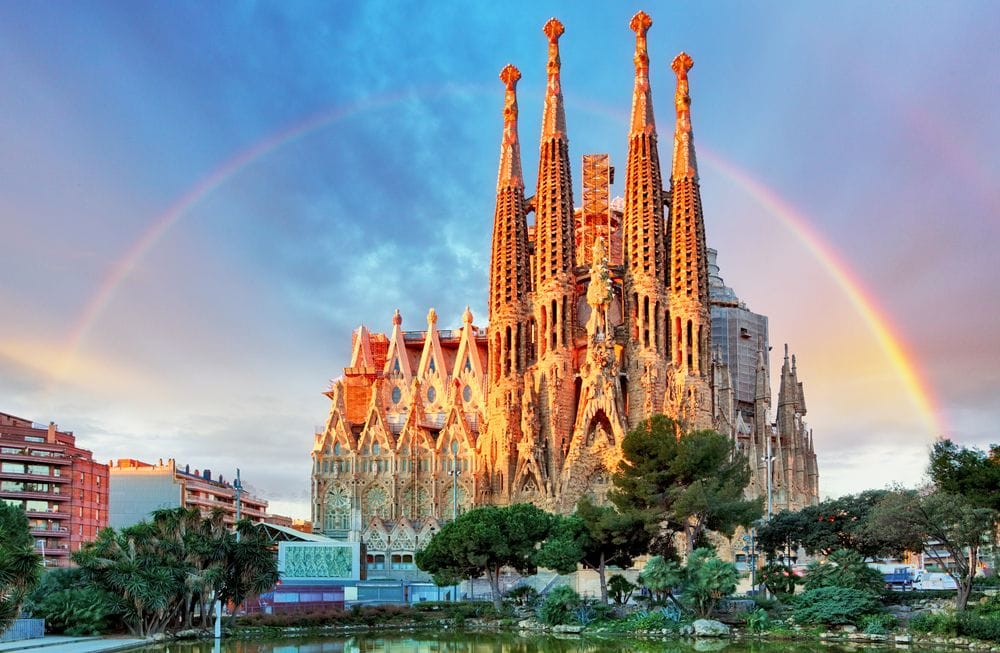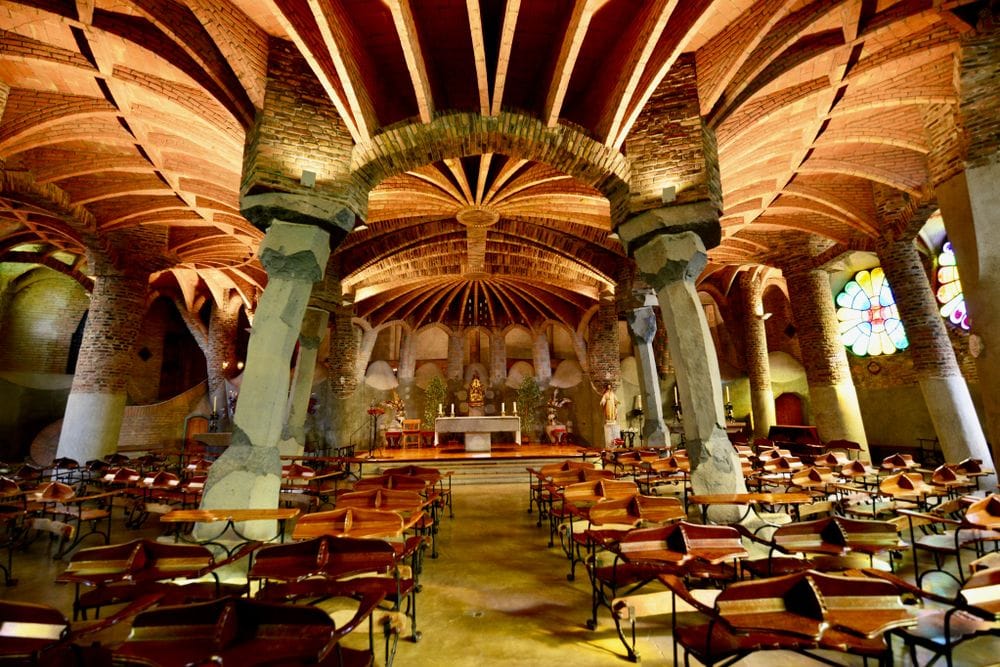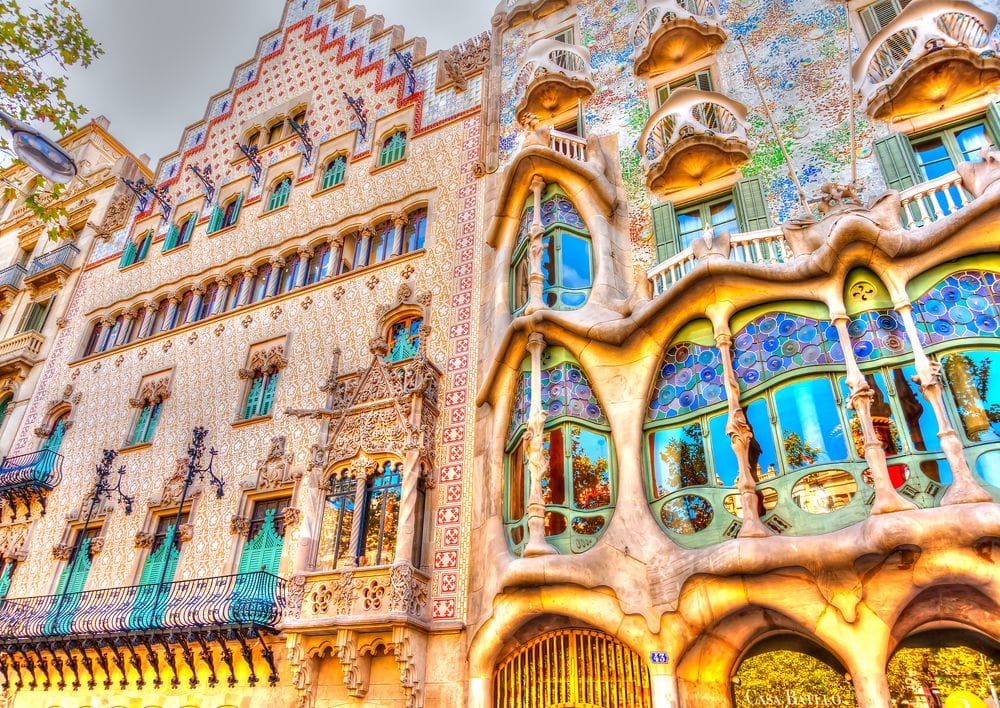Catalan architect Antoni Gaudi (1852-1926) had a distinctive style rich in freedom of form, depth of color, and texture. He worked exclusively in or near Barcelona, spending much of his career constructing the Expiatory Temple of the Holy Family or Sagrada Familia—and working on it— became increasingly devout. After 1910, he abandoned virtually all other work and secluded himself on its site, residing in the workshop. At the age of 74, while on his way to Vespers, he was hit by a trolley car and died from his injuries.
Gaudi’s work is not only staggeringly beautiful and ethereal but organically unifying – it feels like pieces of nature blending into their environments. This master architect’s gifts should not be missed when you’re in Barcelona. Here are some of the most prolific examples.
1. Sagrada Familia, Barcelona
The Sagrada Familia is a Catholic basilica that began in 1882 and is still incomplete, but it has a proposed completion date of 2026. Of all Gaudí’s works, the Sagrada Familia is the finest example of his idea of art. This masterpiece combines Gothic and Art Nouveau design and is breathtaking any time of year. The basilica has 18 spires, or towers, representing the 12 Apostles, the Virgin Mary, the four Evangelists, and the tallest of them all, Jesus Christ. You can go up the towers in the Nativity Facade and Passion Facade to admire the breathtaking views of the city and the Mediterranean Sea.

2. Colonia Güell Church (Güell Crypt), Colonia Güell
Eusebi Güell was a patron of Gaudi’s and asked him to design a church for workers at the textile factory he owned in Colonia Güell, about a half-hour drive outside Barcelona. Sadly, Gaudi couldn’t complete the entire project, and only the basement or crypt area was finished. It was (and still is) large enough to act as a true church. You will find inclined columns, ribbed arches, and stained glass that appear like flitting butterflies. Here, Gaudi tested his centenarian arches, which would become one of his signatures. Forever an environmentalist, he recycled factory materials to decorate the space.

3. Casa Batlló, Barcelona
The Casa Batlló building, initially built in 1877, has a rich history. In 1903, it was purchased by Josep Batlló y Casanovas, a textile industrialist who owned several factories in Barcelona. He gave Gaudi complete control over redoing the building. Gaudi completely changed the façade, redistributing the internal partitioning, expanding the patio of lights, and converting the inside into a true work of art. The Bernat family now owns the building and has fully restored the house. In 1995, the family opened the doors to the public, presenting this architectural gem to the world. Since 2002—coinciding with the International Year of Gaudi— cultural visits have been offered at Casa Batlló. Today, Casa Batlló is a UNESCO World Heritage site and an icon in Barcelona, a must-see for anyone who wants to discover Gaudí’s work and see modernism at its finest. It is also one of the most highly rated cultural and tourist attractions, welcoming about a million visitors annually.

Spend a memorable “Gaudi’s Afternoon” in Barcelona, where LVH invites you to savor the vibrant colors of his architectural masterpieces. Uncover the perfection in exterior design, where detail screams authenticity and refinement. Contact LVH as your trusted guide, and celebrate the magnificence of Barcelona.
